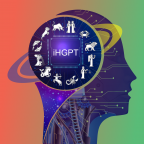For centuries, astrology has captured people’s interest and fascination because it offers insights into relationships, personality traits, and even future predictions based on heavenly alignments. Astrology has reached new heights in recent years with the introduction of artificial intelligence (AI) and provide best astrologer free consultation. This blog will examine the integration of technology and mysticism by delving into the complex inner workings of AI astrology predictions.
1. Data Collection and Analysis:
Big data gathered from multiple sources is the foundation of AI astrology forecasts. This covers historical occurrences, planetary positions, birth charts, and even the private information of those looking for answers. After processing this data, AI algorithms find correlations and patterns that the human eye might miss. Through the use of machine learning techniques, the system can continuously change and become more accurate over time.
2. Birth Charts and Natal Astrology:
In AI-driven predictions, natal astrology—which focuses on individual birth charts—is essential. The AI system creates an extensive chart that shows the positions of celestial bodies at the moment of birth by requiring specific birth details, such as the date, time, and location. These charts are then subjected to complex programs that interpret the data to determine possible influences on a person’s personality, relationships, and life events.
3. Transit and Progression Analysis:
AI astrology forecasts incorporate dynamic elements like planetary progressions and transits, beyond stationary birth charts. Transit analysis provides insights into short-term influences by examining the current positions of celestial bodies with the natal chart. In contrast, progression analysis takes a long-term view by considering how the planets move over a person’s lifetime.
4. Machine Learning and Predictive Modeling:
In AI astrology, machine learning algorithms are essential to predictive modeling. These algorithms find correlations between real-world occurrences and celestial configurations by learning from historical data. The AI system improves the precision of its forecasts by honing its models with additional data. The process of adaptive learning sets AI astrology apart from standard methods.
5. Natural Language Processing for Interpretation:
To facilitate user comprehension of complicated astrological insights, artificial intelligence (AI) astrology predictions frequently utilize natural language processing (NLP). People without in-depth astrological knowledge can access the information thanks to NLP algorithms, which interpret astrological data and produce reports that are readable by humans. The overall usability and utility of AI astrology are improved by this approachable methodology.
6. Ethical Considerations and Skepticism:
Even though predictions from AI astrology show how technology and traditional wisdom can coexist, skepticism and ethical concerns still exist. Data privacy, the subjectivity of astrological conclusions, and the duty of AI developers to disclose the limitations of their forecasts are all potential areas of concern.
Conclusion:
AI astrology forecasts are an amazing synthesis of modern technology and age-old knowledge. These systems aim to provide individualized insights into people’s lives and solve cosmic mysteries by utilizing machine learning, data analysis, and natural language processing. It is critical to approach AI astrology and Chat With AI Astrologer with a balanced viewpoint as the field develops, understanding its fundamental complexities and limitations while also appreciating its potential.


